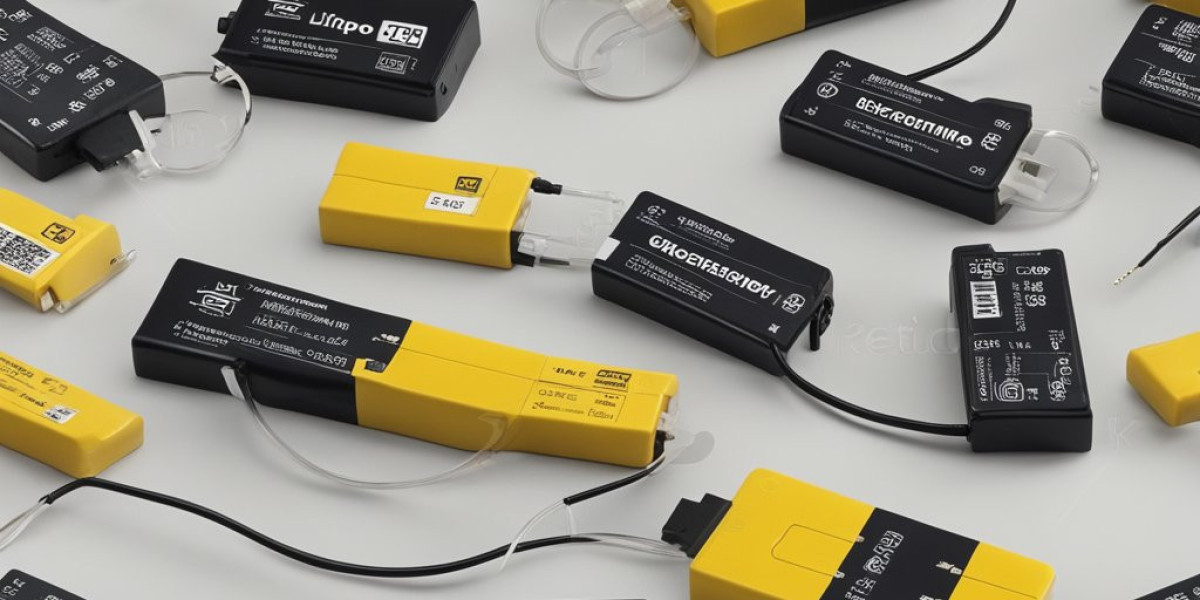Drones have revolutionized various industries, from photography and filmmaking to agriculture and infrastructure inspection. However, the performance of these aerial devices heavily relies on the quality and efficiency of their batteries. In this article, we'll delve into the world of drone batteries, exploring their significance, common issues, essential upgrades, and maintenance tips to enhance your flying experience.
Importance of Drone Batteries
Batteries for drones are the lifeblood of your aerial adventures. They provide the necessary power to keep your drone aloft, ensuring smooth and uninterrupted flights. Without reliable batteries, your drone's performance and flight time are severely compromised, limiting your ability to capture breathtaking aerial footage or accomplish important tasks efficiently.
Common Issues with Weak Batteries
Weak or deteriorating batteries can pose significant challenges to drone enthusiasts. From reduced flight time to sudden power failures mid-flight, weak batteries can lead to frustrating experiences and even potential damage to your drone. Understanding and addressing these issues is crucial for maximizing your drone's performance and longevity.
Understanding Drone Battery Basics
Before diving into upgrades, it's essential to grasp the fundamentals of drone batteries, including their types and the factors influencing their performance.
Types of Drone Batteries
Drone batteries typically come in two main types: lithium polymer (LiPo) and lithium-ion (Li-ion). LiPo batteries are known for their high energy density and lightweight design, making them popular among drone pilots. On the other hand, Li-ion batteries offer longer lifespan and improved stability, albeit with slightly lower energy density.
Factors Affecting Battery Performance
Several factors can impact the performance of drone batteries, including temperature variations, altitude changes, and battery aging.
Temperature Considerations: Extreme temperatures, whether hot or cold, can affect battery performance. Flying in excessively hot conditions can cause batteries to overheat, while cold temperatures can reduce battery efficiency and overall flight time.
Altitude Impact: As drones ascend to higher altitudes, the air becomes thinner, affecting battery performance and drone capabilities. Pilots operating in high-altitude environments need to consider this factor when planning their flights.
Battery Aging: Over time, drone batteries undergo natural wear and tear, resulting in reduced capacity and performance. Understanding the aging process is crucial for proactive battery management and ensuring optimal performance.
Must-Have Upgrades for Drone Batteries
To enhance your drone's performance and reliability, consider investing in these essential battery upgrades.
High-Capacity Batteries
Upgrade to high-capacity batteries to extend your drone's flight time and operational range. High-capacity batteries offer increased energy density, allowing you to enjoy longer flights without compromising performance.
Intelligent Battery Management Systems (BMS)
Intelligent Battery Management Systems (BMS) play a crucial role in optimizing battery performance and safety. These systems offer features such as overcharge protection, cell balancing, and temperature regulation, ensuring safe and efficient operation.
Overcharge Protection: BMS equipped with overcharge protection prevents batteries from being overcharged, reducing the risk of damage or fire hazards.
Cell Balancing: Cell balancing ensures that individual cells within the battery pack are charged and discharged evenly, maximizing battery lifespan and performance.
Temperature Regulation: BMS monitors and regulates battery temperature to prevent overheating and optimize performance, especially in challenging environmental conditions.
Fast Charging Solutions
Invest in fast charging solutions to minimize downtime and maximize productivity. Fast chargers can significantly reduce the time required to recharge your drone batteries, allowing you to get back in the air quickly.
Longevity Enhancements
Implement longevity enhancements to prolong the lifespan of your drone batteries and maintain optimal performance.
Battery Health Monitoring Tools: Utilize battery health monitoring tools to track the condition of your batteries and identify potential issues early on. Regular monitoring allows you to take proactive measures to preserve battery health and prevent premature degradation.
Proper Storage Techniques: Store your batteries properly to minimize degradation and extend their lifespan. Avoid exposing batteries to extreme temperatures or storing them at full charge for extended periods, as these practices can accelerate aging and reduce performance.
Comparing Battery Options
When selecting batteries for your drone, consider factors such as brand reputation, cost, and user reviews to make informed decisions.
Brand Comparison
Research reputable brands known for producing high-quality drone batteries. Look for brands with a track record of reliability and performance, backed by positive user feedback and reviews.
Cost vs. Quality Analysis
While cost is a significant consideration, prioritize quality and performance when choosing drone batteries. Investing in premium batteries may initially incur a higher upfront cost but can yield long-term benefits in terms of reliability, performance, and lifespan.
User Reviews and Recommendations
Consult user reviews and recommendations to gain insights into the real-world performance of different battery options. Pay attention to feedback regarding battery lifespan, reliability, and compatibility with specific drone models.
Installing Upgraded Batteries
Once you've selected the right batteries for your drone, follow these steps to ensure a smooth installation process.
Compatibility Checks
Before purchasing batteries, verify compatibility with your drone model to avoid compatibility issues or performance issues.
Installation Procedures
Follow the manufacturer's instructions for installing batteries correctly. Ensure proper alignment and secure attachment to prevent accidental disconnection during flight.
Calibration and Testing
After installing new batteries, calibrate your drone's flight controller as per the manufacturer's guidelines. Conduct pre-flight tests to verify battery performance and ensure everything is functioning correctly.
Maximizing Battery Performance
To get the most out of your upgraded batteries, follow these tips for maximizing performance and longevity.
Pre-flight Checklist
Before each flight, conduct a thorough pre-flight checklist to ensure everything is in working order, including battery charge levels, propeller tightness, and GPS signal strength.
Flight Time Optimization Techniques
Optimize your flight patterns and maneuvers to maximize flight time and conserve battery power. Avoid aggressive maneuvers and unnecessary altitude changes to minimize energy consumption.
Post-flight Battery Care
After each flight, allow your batteries to cool down before recharging. Avoid storing batteries at full charge for extended periods and consider investing in a battery charging and storage case for added protection.
Safety Precautions and Regulations
Drone battery safety is paramount to prevent accidents and ensure compliance with regulations.
FAA Guidelines for Drone Battery Usage
Familiarize yourself with the Federal Aviation Administration (FAA) guidelines for drone battery usage, including restrictions on battery capacity and transportation regulations.
Handling and Transporting Batteries Safely
Handle and transport drone batteries with care to prevent damage or accidents. Avoid exposing batteries to extreme temperatures or physical damage, and use protective cases during transportation.
Emergency Procedures for Battery Malfunctions
In the event of a battery malfunction or fire, follow proper emergency procedures to minimize risks and prevent further damage. Have a fire extinguisher or fire blanket on hand for immediate response.
Maintenance Tips for Longevity
Regular maintenance is essential for preserving battery health and maximizing lifespan.
Cleaning and Inspecting Batteries
Periodically clean and inspect your batteries for signs of damage or wear. Remove any debris or contaminants that may affect performance and ensure proper ventilation during storage.
Storage Recommendations
Store your batteries in a cool, dry place away from direct sunlight and moisture. Use storage containers or cases designed specifically for drone batteries to prevent damage and maintain optimal conditions.
Periodic Maintenance Schedule
Establish a periodic maintenance schedule to assess battery health and performance. Perform capacity tests and voltage checks regularly to identify any issues early on and take corrective actions as needed.
Case Studies: Success Stories with Upgraded Batteries
Real-life examples highlight the benefits of upgrading drone batteries for improved performance and reliability.
Real-life Examples of Improved Performance
Drone enthusiasts worldwide have reported significant improvements in flight time, stability, and overall performance after upgrading to high-quality batteries.
Testimonials from Drone Enthusiasts
Listen to testimonials from fellow drone enthusiasts who have experienced firsthand the transformative effects of battery upgrades on their aerial adventures.
Future Trends in Drone Battery Technology
As drone technology continues to evolve, so does battery technology.
Emerging Innovations
Stay informed about emerging innovations in drone battery technology, such as advancements in energy density, charging efficiency, and safety features.
Predictions for Advancements
Industry experts predict further advancements in drone battery technology, including longer flight times, faster charging speeds, and enhanced safety features.
Impact on the Drone Industry
The continuous improvement of drone battery technology will have a profound impact on the drone industry, enabling new applications and unlocking greater potential for innovation and growth.
Summary: Elevating Your Drone Experience
In summary, upgrading your drone batteries is essential for elevating your aerial experience. From extending flight time to enhancing safety and reliability, investing in high-quality batteries and implementing proper maintenance practices can significantly enhance your drone flying adventures.
FAQs (Frequently Asked Questions)
Here are answers to some common questions about drone batteries:
What is the average lifespan of a drone battery?
The average lifespan of a drone battery depends on various factors, including usage patterns, charging practices, and environmental conditions. Generally, drone batteries can last anywhere from 100 to 300 charge cycles before experiencing noticeable degradation.
How can I tell if my drone battery needs an upgrade?
Signs that indicate your drone battery may need an upgrade include reduced flight time, swelling or bulging of the battery pack, and difficulty holding a charge. If you notice any of these symptoms, consider investing in a new battery to maintain optimal performance.
Are aftermarket batteries safe to use with drones?
While aftermarket batteries may offer cost savings, it's essential to exercise caution and research reputable brands to ensure safety and compatibility with your drone model. Be wary of counterfeit or low-quality batteries that may pose risks to your drone's operation and safety.
Can I use different brands of batteries together?
Mixing different brands of batteries is not recommended, as it can lead to compatibility issues and potentially compromise performance and safety. Stick to using batteries from the same manufacturer and model to ensure optimal performance and reliability.
What should I do if my drone battery overheats during flight?
If your drone battery overheats during flight, land your drone immediately and allow the battery to cool down before handling it. Avoid charging or using the battery until it has reached a safe temperature. If overheating persists, discontinue use and seek assistance from a professional.
With these insights and recommendations, you're well-equipped to elevate your drone game with essential battery upgrades. Happy flying!



